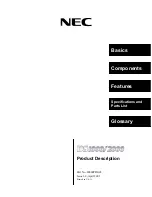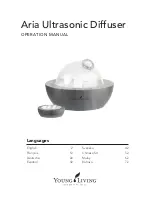
7
MN-333
6. Connect wiring harness #2 to wiring harness #1 (inside the vehicle) by connecting the
red wire from harness #2 and hose, to the low pressure sensor. See Figure 5 for air line
and electrical connection.
7. The next connection is between each air spring and the air line “T” fitting located just
ahead of the check valves in harness #2, near the compressor (Figs. 1 and 7).
a. With the air springs deflated, use a hose cutter or razor blade to cut the air line
already installed between the air springs and the inflation valves.
b. Install the provided “T” fittings (Fig. 1) by pushing the air line into each leg of the “T”
until you feel a definite “click”. Each line should go in 9/16”.
c. Connect a single length of air line to the open leg of each “T”. Bring each of the lines
to the “T” fittings in harness #2 just in front of the check valves and connect as shown
in Figure 7.
d. Route the air line across the chassis from the far side over the exhaust system heat
shields and along the frame up to the compressor. Avoid heat sources, sharp edges,
and tight bends.
8. Connect the power wire from harness #1.
a. Route it to the vehicle fuse box.
b. Use a test light to determine which open terminal (accessory, etc.) works only when
the key is in the “on” or accessory position (or refer to the owners manual for an
available accessory fuse). The terminal should have an amperage rating equal to
or higher than the 15 amp in-line fuse.
c. Connection to the fuse terminal will depend on what type of fuse your vehicle uses.
If your vehicle uses the barrel type fuse, use adapter #1. If you have the standard
spade type fuses, use adapter #2. Many late model vehicles use a smaller spade
type fuse which requires adapter #3 (see inset with fig. 1). If adapter #1 or #2 are
used, it will be necessary to cut off the 1/4” female connector attached to the power
wire and crimp the smaller 3/16” female connector supplied with this kit.
Connect adapter to “HOT” side of the fuse (use a test light to determine). With the ignition
on, the compressor will turn on and fill the system to 10 PSI (0.7 Bar) before shutting off.
9. Connect the gauge light.
a. Route the white wire for the illuminated gauge to harness #1’s fused wire or to a
dash light wire circuit and attach with the quick splice provided.
b. Ground the black wire to an adequate ground. Use the additional wire and connectors
supplied if longer leads are needed (Fig. 1).
10. Press the off/on button to inflate both air springs and use the small deflate button to
adjust the pressure. Inflate to 30 PSI / 2.1 Bar (20 PSI/1.4 Bar for Air Lift 1000 kits).
Check all fittings and inflation valve cores with a solution of 1/5 dish soap to 4/5 water
in a spray bottle for leaks.
NOTE
fig. 8
After the hole is drilled and before
you route the harness to through the
firewall, insert the grommet and “walk”
the material around the inside edge of
the drilled hole. You may have to trim
the grommet to get an exact fit.
(The f lexible grommet is in the sealed
parts package.)
Load Controller II
Summary of Contents for 25592
Page 2: ......
Page 13: ...11 MN 333 Notes Load Controller II...
Page 14: ...12 MN 333 Notes Load Controller II...
Page 15: ......


































